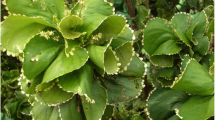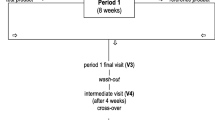Abstract
It is not known if vitamin E in hyperlipidemia and hypercholesterolemia of longer duration has any beneficial or adverse effects on electrolytes, and liver and kidney function. The objectives of this study are to determine (i) if long duration of mild hypercholesterolemia has any adverse effects on serum electrolytes, glucose and enzymes related to liver and kidney functions; (ii) if vitamin E has any effects on serum electrolytes, glucose and enzymes related to liver and kidney function in hypercholesterolemia. Blood samples were collected from the rabbits before and at various intervals during administration of a high cholesterol diet (0.25%) for 2 and 4 months, and while on a high cholesterol diet with vitamin E following a high cholesterol diet. Measurements of serum total cholesterol (TC), glucose, aspartate aminotransferase (AST), alkaline phosphatase (ALP), alanine aminotransferase (ALT), gamma-glutamyltransferase (GGT), albumin, creatinine, electrolytes [sodium (Na), potassium (K), chloride (Cl), and carbon dioxide (CO2)] were made. High cholesterol diet for 2 months produced hypercholesterolemia which was associated with reductions in serum glucose, unaltered serum electrolytes, ALT, ALP, GGT, albumin and creatinine, and increased levels of AST. Hypercholesterolemia for 4 months had effects similar to hypercholesterolemia for 2 months except it lowered serum ALP. Vitamin E did not affect any of the parameters except serum glucose and Cl, which decreased compared to the values at month 2. Hypercholesterolemia for short and long term does not have adverse effects on liver or kidney function, and serum electrolytes. Vitamin E during hypercholesterolemia does not affect serum electrolytes or liver and kidney function.
Similar content being viewed by others
References
Rimm B, Stampfer MJ, Ascherio A, Giovannucci E, Colditz GA, Willett WC (1993) Vitamin E consumption and the risk of coronary heart disease in men. N Engl J Med 328:1450–1456
Stampfer MJ, Hennekens CH, Manson JE, Colditz GA, Rosner B, Willett WC (1993) Vitamin E consumption and the risk of coronary heart disease in women. N Engl J Med 328:1444–1449
Kushi LH, Folsom AR, Prineas RJ, Mink PJ, Wu Y, Bostick RM (1996) Dietary antioxidant vitamins and death from coronary heart disease in postmenopausal women. N Engl J Med 334:1156–1162
Stephens NG, Parsons A, Schofield PM, Kelly F, Cheeseman K, Mitchinson MJ (1996) Randomised controlled trial of vitamin E in patients with coronary disease: Cambridge Heart Antioxidant Study (CHAOS). Lancet 347:781–786
Losonczy KG, Harris TB, Havlik RJ (1996) Vitamin E and vitamin C supplement use and risk of all-cause and coronary heart disease mortality in older persons: the Established Population for Epidemiologic Studies of the Elderly. Am J Clin Nutr 64:190–196
GISSI-Prevenzione Investigators (1999) Dietary supplementation with n-3 polyunsaturated fatty acids and vitamin E after myocardial infarction: results of the GISSI-Prevenzione trial. Lancet 354:447–455
Heart Protection Study Collaborative Group (2002) MRC/BHF Heart Protection Study of antioxidant vitamin supplementation in 20, 536 high-risk individuals: a randomized placebo-controlled trial. Lancet 360:23–33
de Gaetano G, Collaborative Group of the Primary Prevention Project (2001) Low-dose aspirin and vitamin E in people at cardiovascular risk: a randomized trial in general practice. Lancet 357:89–95
Yusuf S, Dagenais G, Pogue J, Bosch J, Sleight P (2000) Vitamin E supplementation and cardiovascular events in high-risk patients. The Heart Outcomes Prevention Evaluation Study Investigators. N Engl J Med 342:154–160
Prasad K, Kalra J (1993) Oxygen free radicals and hypercholesterolemic atherosclerosis: effect of vitamin E. Am Heart J 125:958–973
Negis Y, Aytan N, Özer N, Ogru E, Libinaki R, Gianello R, Azzi A, Zingg JM (2006) The effect of tocopheryl phosphates on atherosclerosis progression in rabbits fed with a high cholesterol diet. Arch Biochem Biophys 450:63–66
Prasad K (2009) Vitamin E does not slow the progression of hypercholesterolemic atherosclerosis. Int J Angiol (in press)
Prasad K (2009) Vitamin E does not regress hypercholesterolemic atherosclerosis. J Cardiovasc Pharmacol Ther (in press)
Prasad K, Kalra J, Lee P (1994) Oxygen free radicals as a mechanism of hypercholesterolemic atherosclerosis: effects of Probucol. Int J Angiol 3:100–112
Prasad K (1999) Reduction of serum cholesterol and hypercholesterolemic atherosclerosis in rabbits by secoisolariciresinol diglucoside isolated from flaxseed. Circulation 99:1355–1362
Prasad K, Lee P (2007) Suppression of hypercholesterolemic atherosclerosis by pentoxifylline and its mechanism. Atherosclerosis 192:313–322
Lee P, Prasad K (2003) Suppression of oxidative stress as a mechanism of reduction of hypercholesterolemic atherosclerosis by cyclooxygenase inhibitors. Int J Angiol 12:13–23
Freeman BA, Crapo JD (1982) Biology of disease: free radicals and tissue injury. Lab Invest 47:412–426
Prasad K (2008) Serum biochemical changes in rabbits on a regular diet with and without flax lignan complex following a high cholesterol diet. Int J Angiol 17:27–32
Prasad K (2009) Flax lignan complex slows down the progression of atherosclerosis in hyperlipidemic rabbits. J Cardiovasc Pharmacol Ther 14:38–48
Cyrus T, Yao Y, Rokach J, Tang LX, Praticò D (2003) Vitamin E reduces progression of atherosclerosis in low-density lipoprotein receptor-deficient mice with established vascular lesions. Circulation 107:521–523
Averill MM, Bennett BJ, Rattazzi M, Rodmyre RM, Kirk EA, Schwartz SM, Rosenfeld ME (2009) Neither antioxidants nor genistein inhibit the progression of established atherosclerotic lesions in older apoE deficient mice. Atherosclerosis 203:82–88
Xu G, Stoffers DA, Habener JF, Bonner-Weir S (1999) Exendin-4 stimulates both beta-cell replication and neogenesis, resulting in increased beta-cell mass and improved glucose tolerance in diabetic rats. Diabetes 48:2270–2276
Katsuma S, Hirasawa A, Tsujimoto G (2005) Bile acids promote glucagon-like peptide-1 secretion through TGR5 in a murine enteroendocrine cell line STC-1. Biochem Biophys Res Commun 329:386–390
Haidara MA, Mikhailidis DP, Rateb MA, Ahmed ZA, Yassin HZ, Ibrahim IM, Rashed LA (2009) Evaluation of the effect of oxidative stress and vitamin E supplementation on renal function in rats with streptozotocin-induced Type 1 diabetes. J Diabetes Complicat 23:130–136
Yokote K, Bujo H, Hanaoka H, Shinomiya M, Mikami K, Miyashita Y, Nishikawa T, Kodama T, Tada N, Saito Y (2008) Multicenter collaborative randomized parallel group comparative study of pitavastatin and atorvastatin in Japanese hypercholesterolemic patients: collaborative study on hypercholesterolemia drug intervention and their benefits for atherosclerosis prevention (CHIBA study). Atherosclerosis 201:345–352
Assy N, Kaita K, Mymin D, Levy C, Rosser B, Minuk G (2000) Fatty infiltration of liver in hyperlipidemic patients. Dig Dis Sci 45:1929–1934
Lu LS, Wu CC, Hung LM, Chiang MT, Lin CT, Lin CW, Su MJ (2007) Apocynin alleviated hepatic oxidative burden and reduced liver injury in hypercholesterolaemia. Liver Int 27:529–537
Molgaard J, von Schenck H, Olsson AG (1989) Comparative effects of simvastatin and cholestyramine in treatment of patients with hypercholoesterolaemia. Eur J Clin Pharmacol 36:455–460
Mabuchi H, Nohara A, Kobayashi J, Kawashiri MA, Katsuda S, Inazu A, Koizumi J, Hokuriku Lipid Research Group (2007) Effects of CoQ10 supplementation on plasma lipoprotein lipid, CoQ10 and liver and muscle enzyme levels in hypercholesterolemic patients treated with atorvastatin: a randomized double-blind study. Atherosclerosis 195:182–189
Arafa HM (2005) Curcumin attenuates diet-induced hypercholesterolemia in rats. Med Sci Monit 11:BR228–BR234
Hatzitolios A, Savopoulos C, Lazaraki G, Sidiropoulos I, Haritanti P, Lefkopoulos A, Karagiannopoulou G, Tzioufa V, Dimitrios K (2004) Efficacy of omega-3 fatty acids, atorvastatin and orlistat in non-alcoholic fatty liver disease with dyslipidemia. Indian J Gastroenterol 23:131–134
Ekam VS, Ebong PE (2007) Serum protein and enzyme levels in rats following administration of antioxidant vitamins during caffeinated and non-caffeinated paracetamol induced hepatotoxicity. Niger J Physiol Sci 22:65–68
Koyuturk M, Yanardag R, Bolkent S, Tunali S (2007) The potential role of combined anti-oxidants against cadmium toxicity on liver of rats. Toxicol Ind Health 23:393–401
Hamden K, Boujbiha MA, Masmoudi H, Ayadi FM, Jamoussi K, Elfeki A (2009) Combined vitamins (C and E) and insulin improve oxidative stress and pancreatic and hepatic injury in alloxan diabetic rats. Biomed Pharmacother 63:95–99
Ravel R (1995) Liver and biliary tract tests. In: Clinical Laboratory Medicine, 6th edn. Mosby-Year Book Inc., St. Louis, MO, pp 309–330
Ramírez-Farías C, Madrigal-Santillán E, Gutiérrez-Salinas J, Rodríguez-Sánchez N, Martínez-Cruz M, Valle-Jones I, Gramlich-Martínez I, Hernández-Ceruelos A, Morales-Gonzaléz JA (2008) Protective effect of some vitamins against the toxic action of ethanol on liver regeneration induced by partial hepatectomy in rats. World J Gastroenterol 14:899–907
Ravel R (1995) Renal function tests. In: Clinical Laboratory Medicine, 6th edn. Mosby-Year Book Inc., St. Louis, MO, pp 166–177
Acknowledgments
This work was supported by a grant from the Heart and Stroke Foundation of Saskatchewan, Canada. The technical assistance of Ms. Barbara Raney and Mr. P. K. Chattopadhyay for this study is highly appreciated.
Author information
Authors and Affiliations
Corresponding author
Rights and permissions
About this article
Cite this article
Prasad, K. Effects of vitamin E on serum enzymes and electrolytes in hypercholesterolemia. Mol Cell Biochem 335, 67–74 (2010). https://doi.org/10.1007/s11010-009-0243-x
Received:
Accepted:
Published:
Issue Date:
DOI: https://doi.org/10.1007/s11010-009-0243-x




